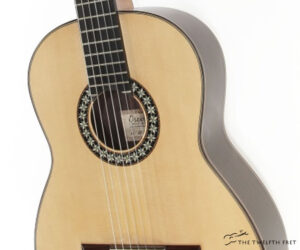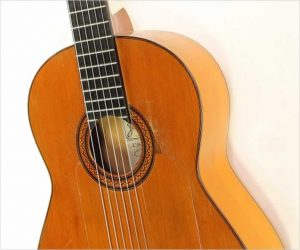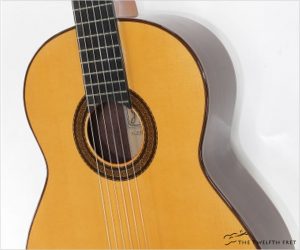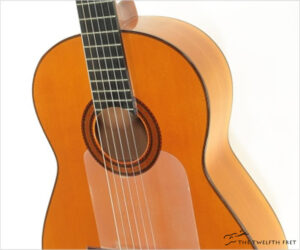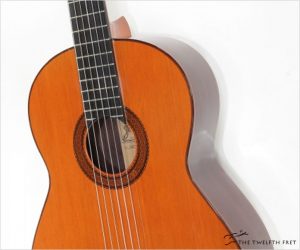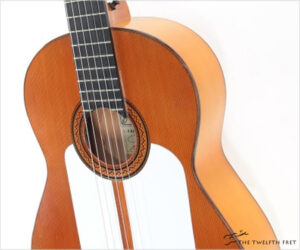This Oscar Munoz AP72 Classical Guitar dates to May of 2019 and sports a French Polish finish over European Spruce, Indian Rosewood and Spanish Cedar. Typical of hand built models from Granada, this guitar is built in the Spanish style with an integrated ‘slipper’ heel neck to body joint. The top and top bracing are European Spruce, paired with Indian Rosewood for the sides, back and bridge.
Made In Spain
Ramirez 1a flamenco guitars are built in the traditional Spanish style at the ‘home’ workshop. The guitar centers on a ‘slipper foot’ neck to body joint, with the sides fitting into slots cut into the heel block. The body pairs a Spruce top with Cypress back and sides – a very light wood in terms of weight and colouring, also providing a lot of brightness to the tone.
The Ramirez 1a or Tradicional, seen here with a Spruce top, has for been a benchmark of top quality classical and flamenco guitars for over half a century. The 1a designation technically refers to the quality of the materials and workmanship, but has become associated with the Tradicional model.
Here is an historic piece – one of Lenny Breau’s Ramirez 1a Flamenco Guitars, built during 1961 and used during many appearances with Lenny as seen in the attached clips. The first clip is from is a CBC documentary from 1968 with Lenny playing the guitar with its distinctive friction tuners, and the visible, protective tap plates (Golpeador). Note the technical deviation from ‘strictly traditional’ Flamenco style – the use of a thumbpick, very likely a Chet Atkins influence.
The Ramirez Model 1a Tradicional, seen here with a Red Cedar top, has been a benchmark of top quality classical and flamenco guitars for over half a century. The 1a designation technically refers to the quality of the materials and workmanship, but has become associated with the Tradicional model.
This instrument has sold
MORE →This Ramirez 1a Flamenco Blanca is a wonderful rarity, built and signed by Antonio Martínez Ortega, one of Jose Ramirez III’s top craftsmen, during 1969. Over the last couple of years, this fine guitar has been modified to make it more ‘Performance Ready’: the original Rosewood friction tuning pegs have been replaced with geared Wittner tuners, and a Carlos VIPDM pickup set has been installed, with controls tucked under the bass edge of the soundhole.
This instrument has sold
MORE →